- Improved warnings and errors when attempting to import parts with
StockandUnit of Measuredefined [fix]Unable to import parts with negative stock (for bulk stock adjustments of existing parts)[fix]Chance for being unable to move the whole quantity of a consumable to another location due to rounding errors
- Reduced margins on option values when displayed on tables so row height isn't changed. This allows for a small performance improvement when rendering tables.
- Break lines on BOM instructions
- Phone included on contact's details
- Possible fix for the chance of some rows not being rendered
[fix]Settingremove inventory if emptynot being respected when consuming inventory on production builds[fix]Chance for not being able to type a number on a quantity input when minimum value exists and it's positive
[fix]Chance for purchasing tables not to preserve its state[fix]When editing a contact, phone field used as default value for email[fix]Inventory restrictions:Allow from other ownersnot being respected[fix]Quantity inputs with defined minimum/maximum value, conversion for those limits not being done when unit changes (e.g. if minimum value is "1 L" and the unit is changed to "mL" the new minimum value should now be "1000 mL" and not "1 mL")[fix]Chance for crash when adding items from a sales order into another one, through theAdd to.. Sales Ordermenu[fix]Suppliers: when importing custom quotes, chance for in-house parts not to be found[fix]Production build: chance for rows to be marked as assembled even if any source has been picked, and thus no inventory had been consumed, when using generic parts
- When cancelling a production build, a confirmation text has to be typed in
[fix]Chance for crash in theProducts - Pricing & Availabilitytable[fix]Unable to import quantities with a custom unit of measure that includes numbers, whitespaces or dashes[fix]Chance forNaNprice when defining a custom price break
- Barcode labels can now be exported from the production availability table as well as from the production build table. These barcodes might include the quantity listed on these tables.
- Products table now includes the custom fields for Part
- When importing a BOM, if
Revis mapped for a part but not found on the app, it's still set on the BOM row. Even if inventory or the revision itself doesn't exist on the app by the time the BOM is imported, this makes sure the revision is enforced during production. - In the production build table some actions on the context-menu were moved to an
Actions...sub-menu so the chances for the whole context-menu to overflow the window are lower - A
Select allmenu was added to the tables context-menu which selects all rows [fix]Not able to import stock with unit of measure other thaneachfrom Suppliers and Purchase Orders[fix]Chance for a doublepart already existswarning when importing parts[fix]When editing a part,Electricalcategory being set by default[fix]When defining a custom price break for a part with a unit of measure that belongs to theUnitcategory, not able to set the price "per selected unit" or "per value and select unit" (instead, the price would be set "per default unit"). For example, when entering the price for aBox-of-5, the price would be set pereachif that would be the default unit of the part.[fix]Manually changingQtyon a purchase order would zero planned inventory for remaining parts on it[fix]Not able to setPref. Supplieron outsourced parts
- When importing parts, units of measure on the
Stockfield are now case-insensitive - When importing in-house parts, if the part and corresponding product already exist but the mapped
Revdoesn't, a new product revision (with empty BOM) is created [fix]Crash after setting generic parts as equivalents of each other[fix]Unable to create builds from production plans that have an empty BOM. This might not be very common (having production revisions with an empty BOM) but if that's what you need, the app won't prevent you from using production plans just for, even though no procurement is created in this case, just the production build(s).
- API: when creating a new product a new default revision is also created and the
revCodecan now be passed (previously, it would default to "A") [fix]Chance for the global History to not load events[fix]Chance for the drag-and-drop CSV file feature not to work[fix]Inputs not enforcing min/max values[fix]When importing parts withCreate productsenabled,Rev(if mapped) not being respected. Before theRevfield was used only for existing product revisions and to adjust stock.[fix]Chance for the partsAutocomplete...feature not to fill-in some fields[fix]Barcode scanning with configuration set toAction: SearchandWhere: Current Tablesnot working on the production availability table[fix]In the BOM table's context menu, some actions were moved to a sub-menuActions...so the whole context menu doesn't overflow the window making it impossible to see some of its items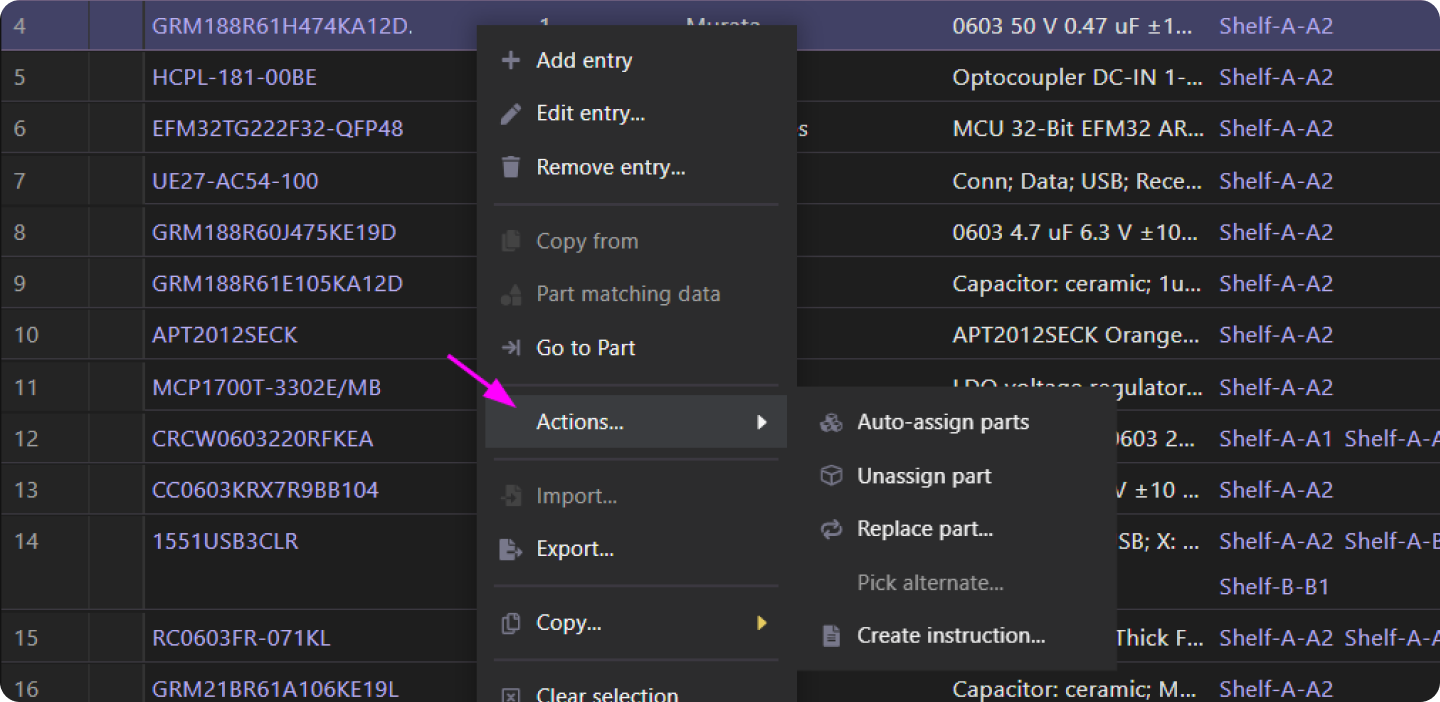
Expiration Datecan be passed when importing custom quotes- When importing custom quotes, existing quotes for mapped supplier and part can be automatically expired

- Menu added to expire selected custom quotes (at the current date)

[fix]BOM instructions not being copied when creating a new product revision copied from the previous one[fix]Chance for infinite loop when rendering Available Quotes
Happy new year! The first release of the year brings the beta into the main release channel and with it several new features:
- Barcode actions: with barcode actions you can accomplish a task, such as adding, removing or moving inventory by scanning a sequence of barcodes and without keyboard or mouse intervention. To initiate a barcode action all you need to do is to scan the barcode of one of the available actions on this Barcode Actions PDF and then the app will inform you of the next barcodes you should scan in order to complete it.
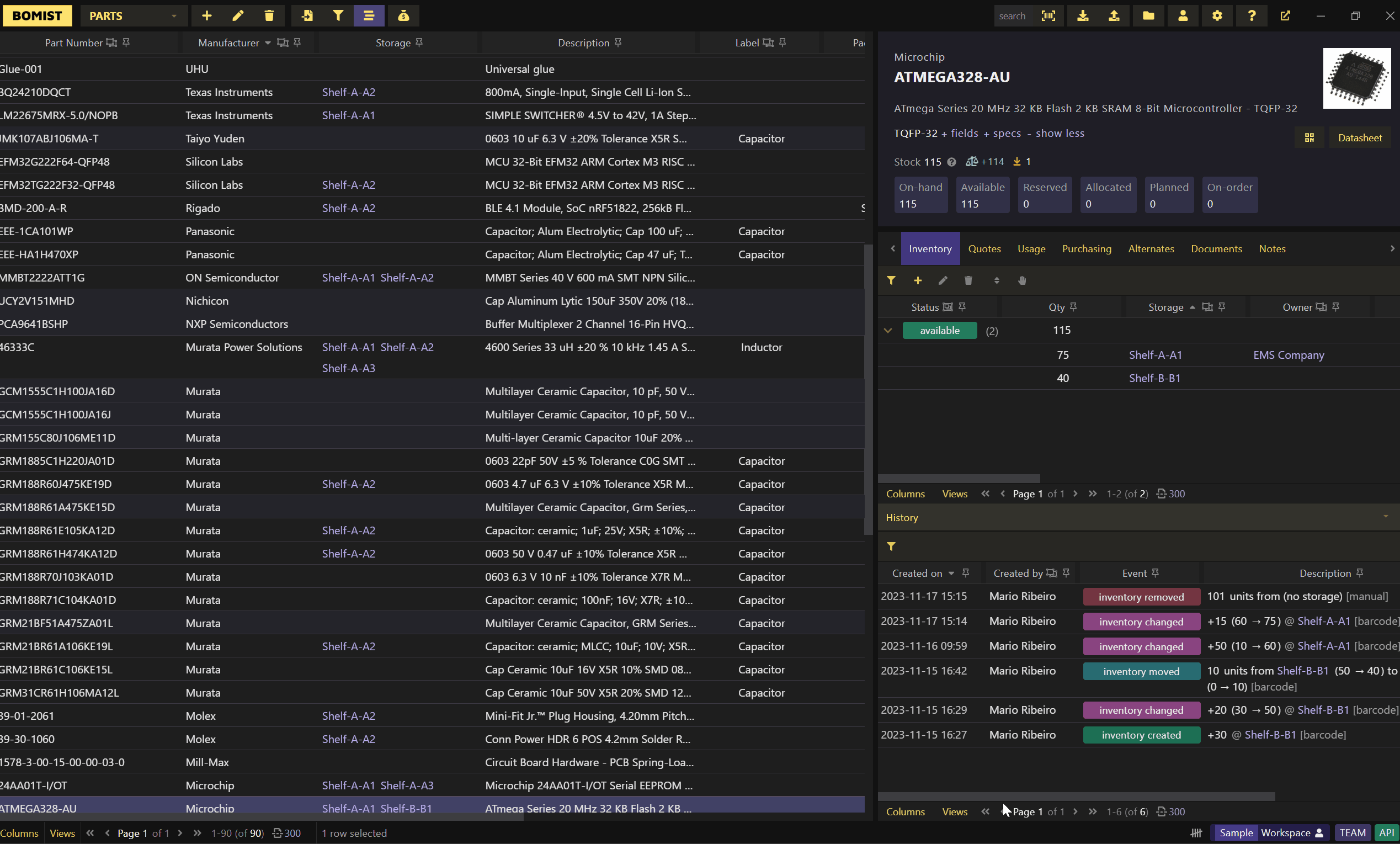
- Integration with third-party APIs from online suppliers. These APIs allow you to get pricing information and quotes directly from these suppliers or distributors. You'll have to get your API credentials from each of these suppliers in case you'd want to use them, and each will have different conditions and limits (e.g. maximum number of requests) which you should check. The app takes care of caching and ensures maximum requests per minute is respected for every supported API service. Currently supported APIs: Mouser, DigiKey, Element14 (Farnell, Newark), TME and Future Electronics. More to be expected. Credentials for the third-party APIs can be entered at
Settings - Workspace - Quotes.
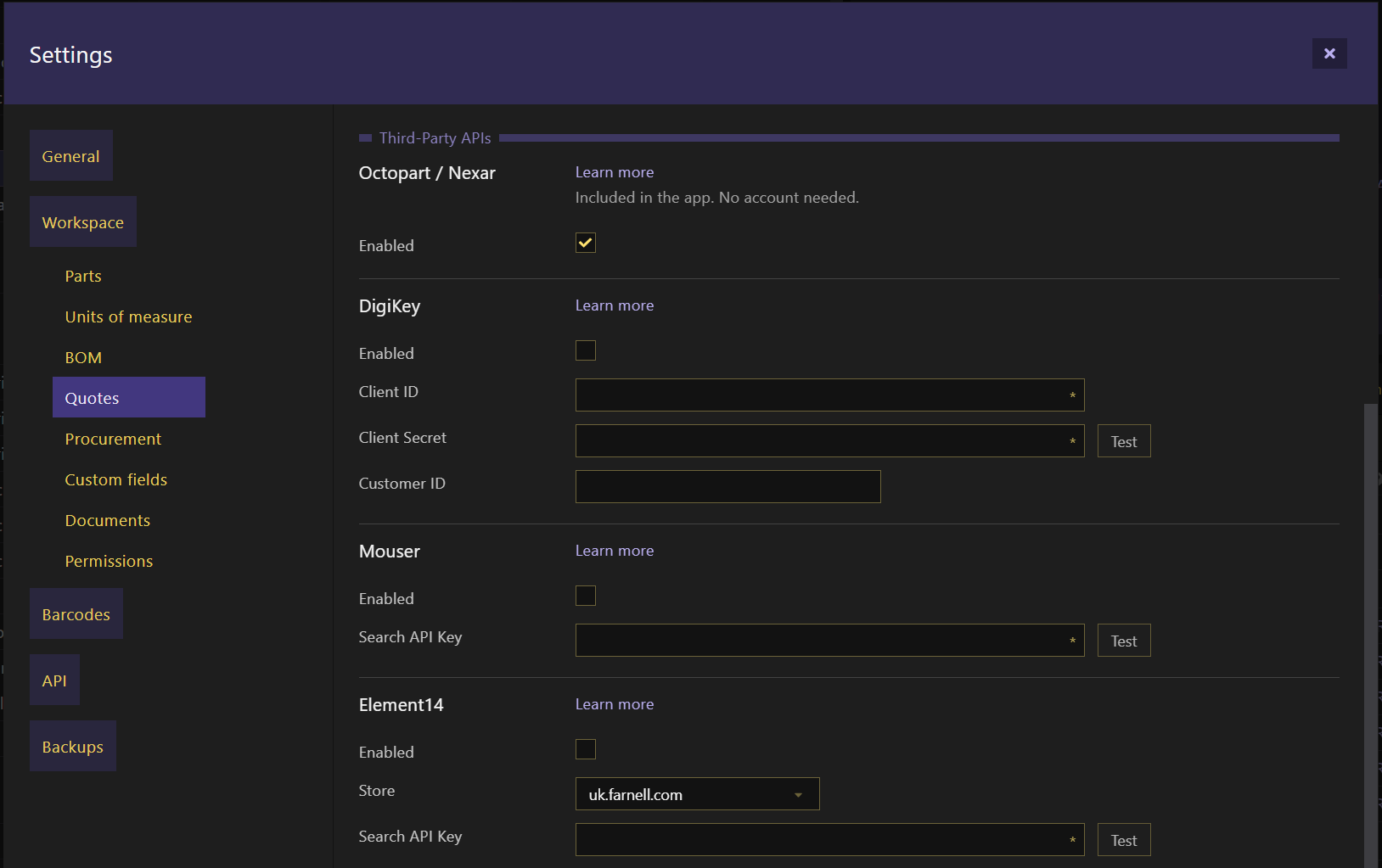
-
Octopart / Nexar API is included by default (just as before; no account needed) but can now be disabled, if needed
-
The app now detects identical parts whenever importing or manually creating parts. Identical parts are parts with the same Part Number but identical Manufacturer (e.g. "Wurth Electronics" vs "Würth Elektronik"). By default, identical parts are considered the same. When importing parts you'll be warned about identical parts, if any, and given an option to manually confirm if those parts are meant to be considered the same or not.


This should prevent having multiple parts listed on the app that actually represent the same one. Before, a different Manufacturer for the same Part Number would always be considered as a different part whenever importing or manually creating a part. Once created, parts are still considered unique / different based on both Part Number and Manufacturer as different manufacturers might use the same part number.
- BOM Instructions: BOM instructions allow you to create steps that should be followed during assembly. A BOM instruction can reference items in the BOM and documents and notes can be added into it as well.
During production you can then change the status of each step from to-do, to in-progress to done.
- Calendar: you have now access to a calendar to better and more easily visualize important dates (deadlines). Just look for the calendar button that, if available, should be right next to the filters button (see below). Right now you have access to a calendar in: sales orders (delivery dates), production plans (dates by which products should be assembled) and production builds (dates by which production should have inventory reserved and has been fully assembled)
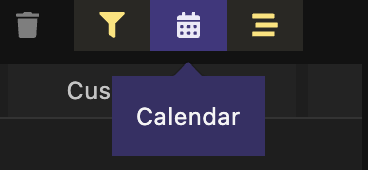
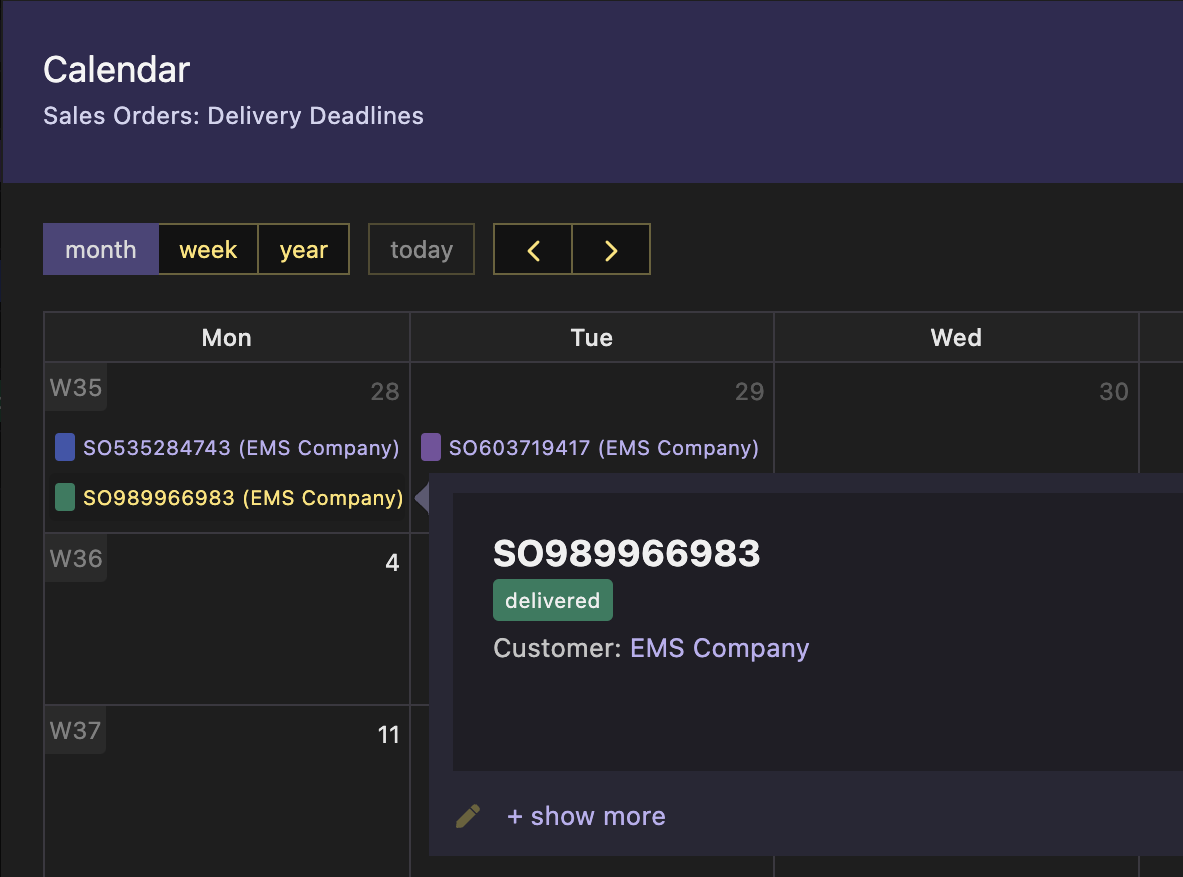
- Files can now be drag-and-dropped onto tables. Tables that can import data through a CSV file will accept CSV files (except purchase orders). Files can also be dropped into Document tables, both on the global table as well as on the Documents table that belong to things (i.e. parts, etc). In this case, the file is saved/uploaded to the workspace itself and becomes listed on the thing it refers to.
- Company information can be added under
Settings - Workspace. This information is then included on exported PDFs for sales orders and purchase orders
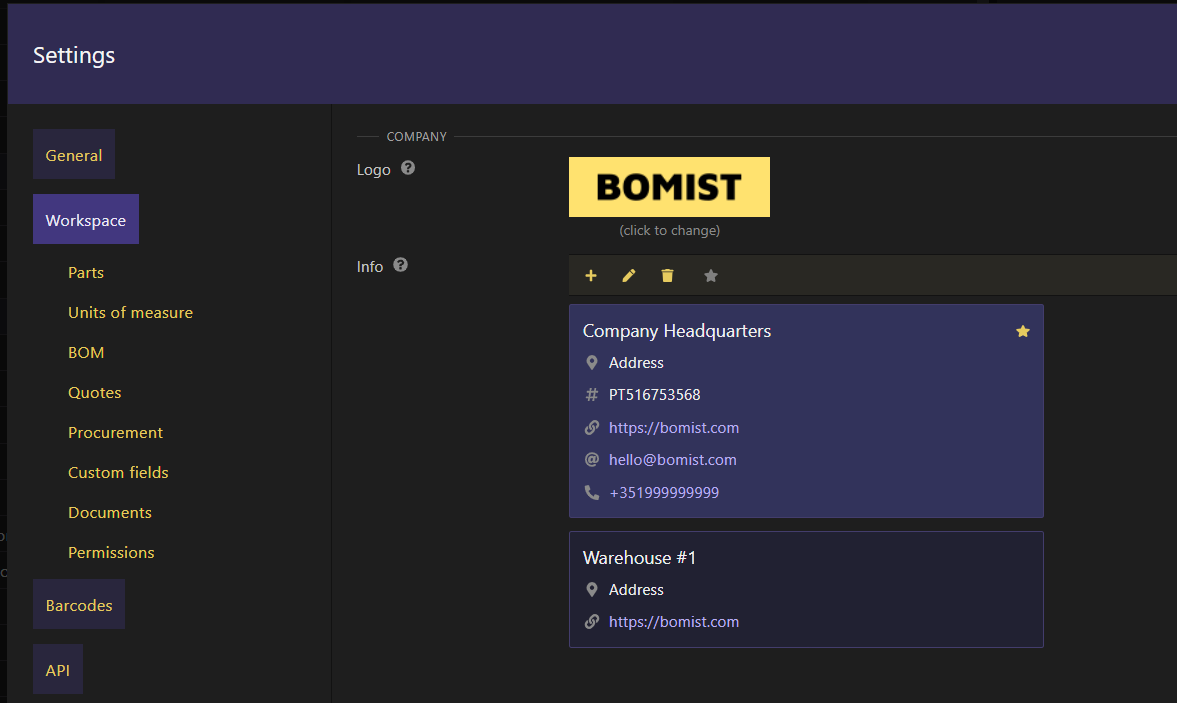
- A search input (Filter...) for basic search was added to the
Issuestable - When importing CSV files, the fields to map are now double-sorted: first by required ones and then alphabetically
- API: endpoint
/storage/<storage_id>/moveadded - API:
/documentsendpoints added so you can get and set documents for things in the app (i.e. for parts, etc.) - API: history endpoints added
- History: storage events are now logged (storage created, moved or removed)
- Production plans can now be imported through a CSV file
- When "going-to" something (e.g. a part), if filters are active and possibly preventing the item to show up on the table, a popup is displayed informing you of that including a button to quickly close filters so the item would become visible
[fix]Unable to import custom quotes unless parts are identified by Internal PN
- On a purchase order, when receiving items and printing the corresponding labels by clicking on
Receive & Print Labelsyou are now presented with a dialog which lets you choose if inventory or part labels should be printed. In case a Lot was created, a label for it can also be printed. Lead timecolumn added to the purchase list and product pricing tables (tables where quotes are used)- A supplier can have multiple entries for the same Part Number using different supplier part numbers
- Custom quotes can now have a URL
- BOM entry custom fields added to the product pricing and production build tables
[fix]DigiKey quotes not being presented as preferred